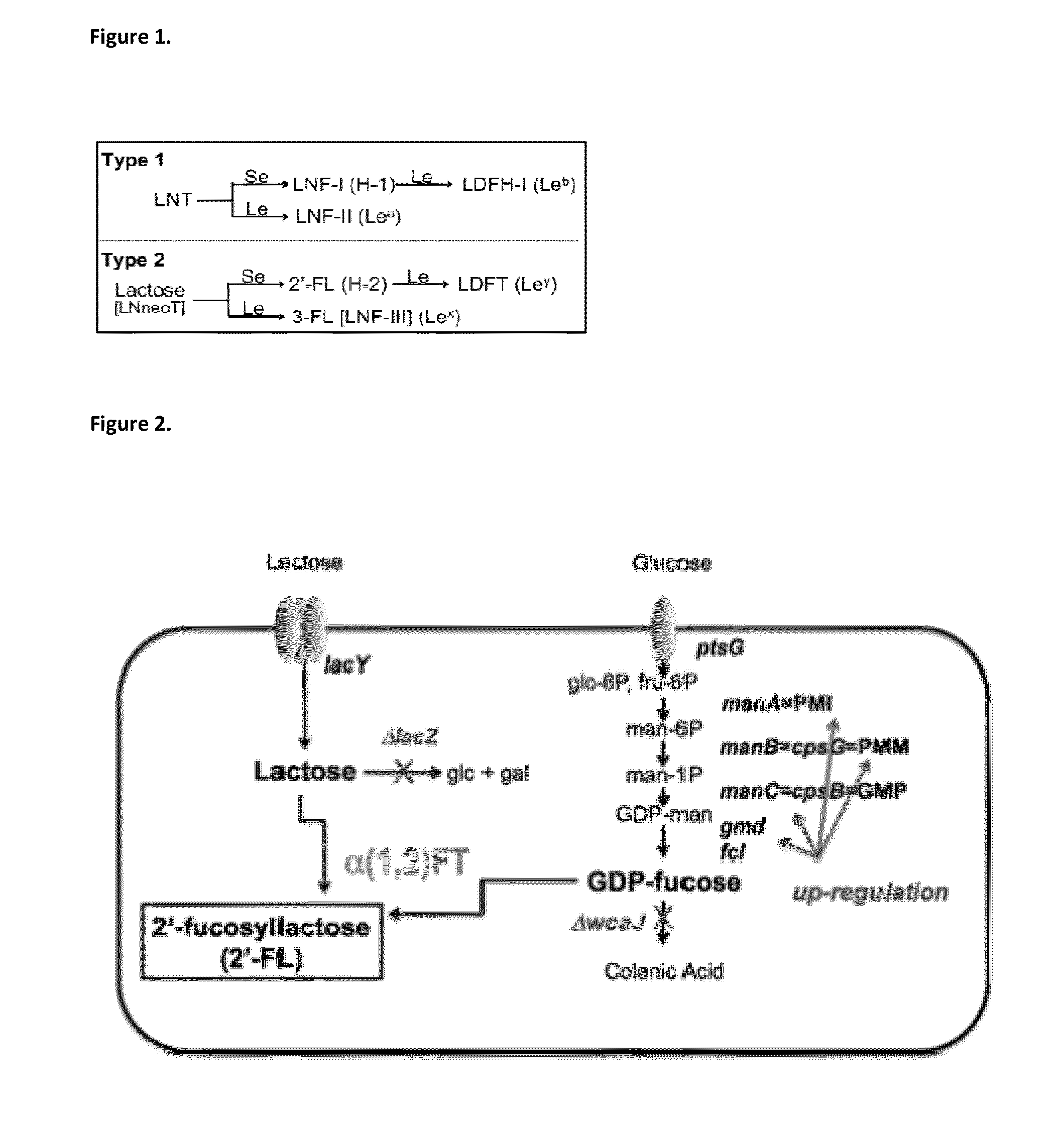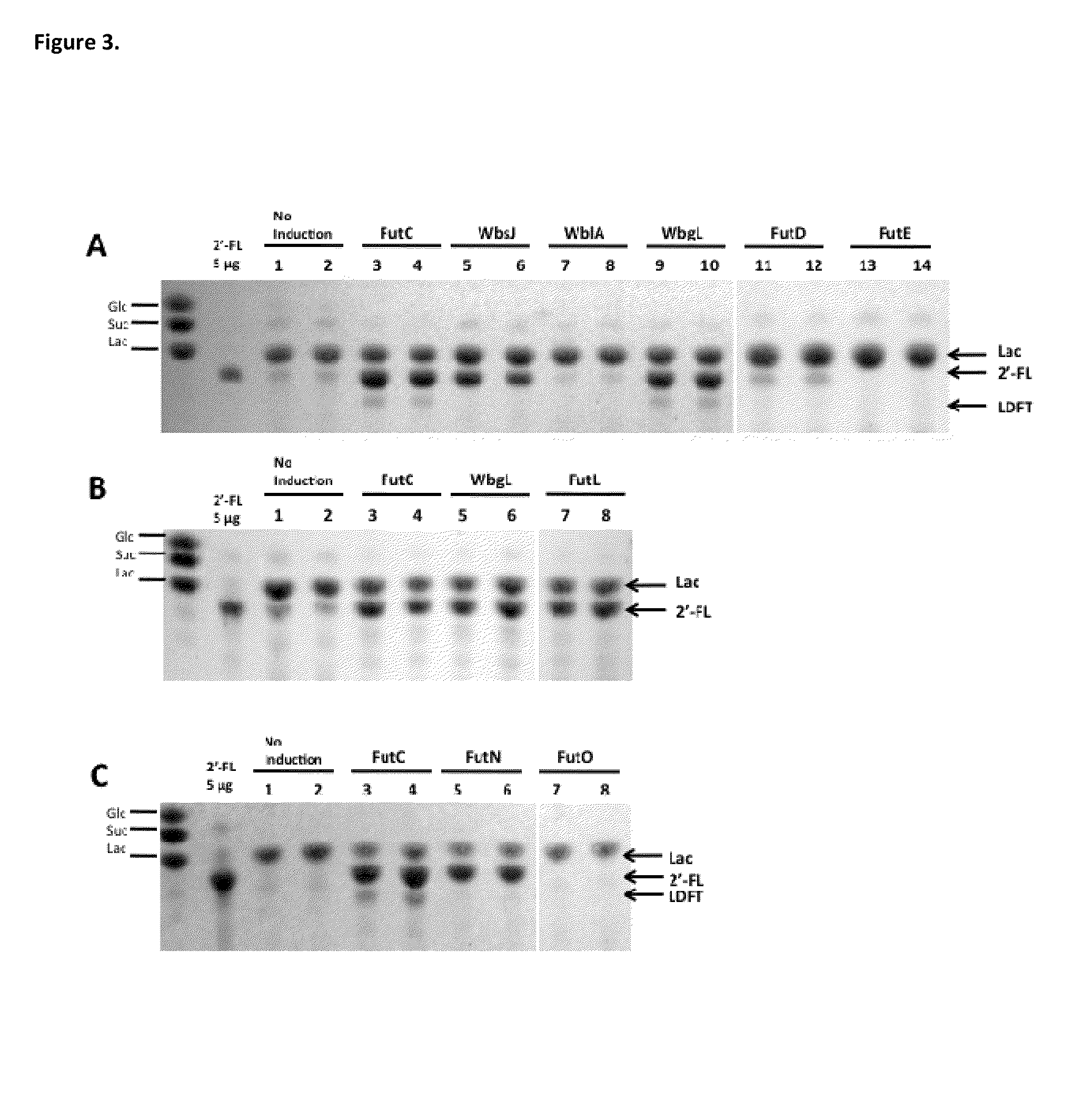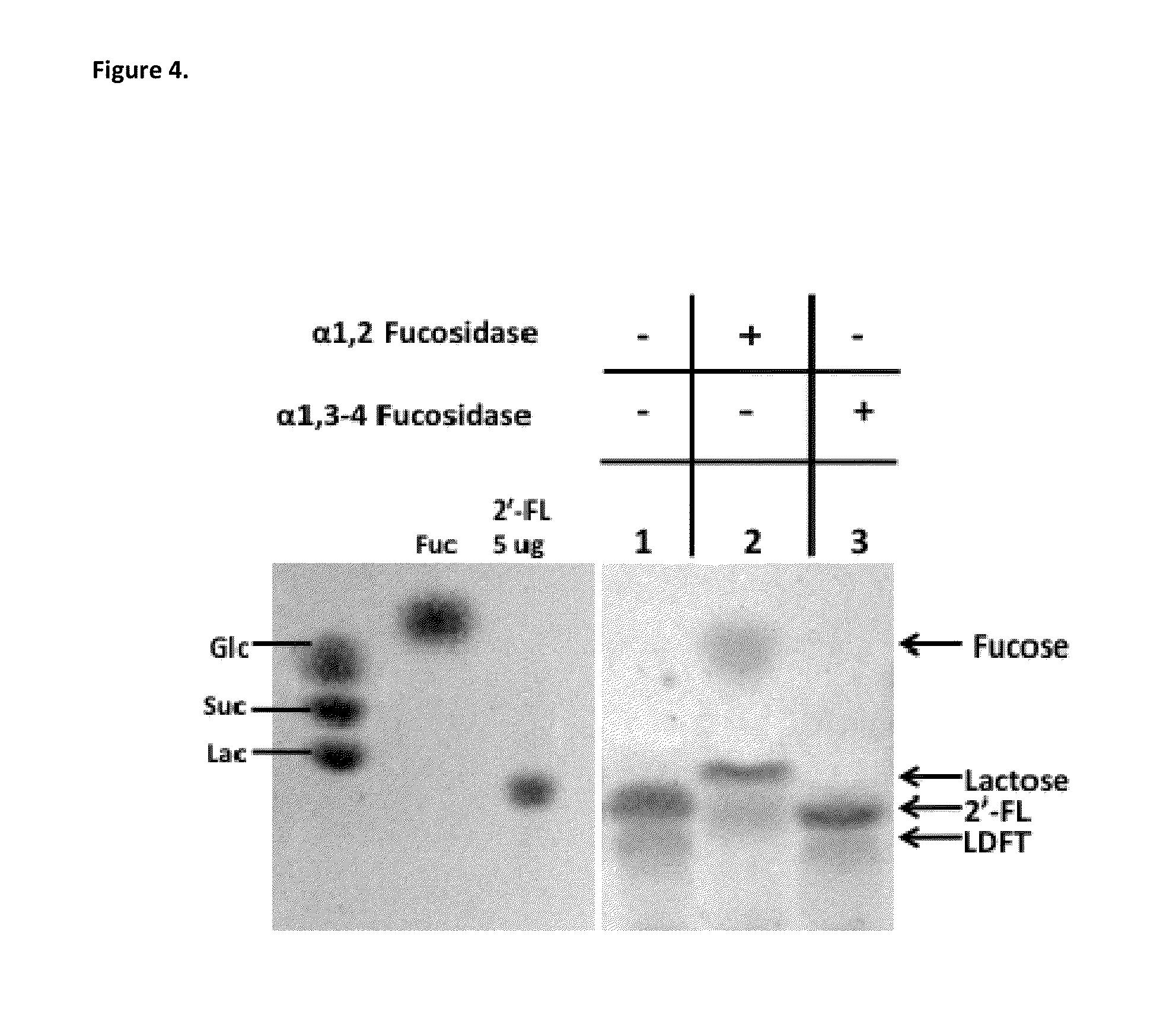Alpha (1,2) fucosyltransferases suitable for use in the production of fucosylated oligosaccharides
a technology of fucosyltransferases and oligosaccharides, applied in the field of fucosylated oligos, can solve the problems of limited production through chemical synthesis and high overall cost, and achieve the effects of reducing severity and/or frequency of symptoms, eliminating symptoms, and facilitating improvement or remediation of damag
- Summary
- Abstract
- Description
- Claims
- Application Information
AI Technical Summary
Benefits of technology
Problems solved by technology
Method used
Image
Examples
Embodiment Construction
[0058]While some studies suggest that human milk glycans could be used as antimicrobial anti-adhesion agents, the difficulty and expense of producing adequate quantities of these agents of a quality suitable for human consumption has limited their full-scale testing and perceived utility. What has been needed is a suitable method for producing the appropriate glycans in sufficient quantities at reasonable cost. Prior to the invention described herein, there were attempts to use several distinct synthetic approaches for glycan synthesis. Some chemical approaches can synthesize oligosaccharides (Flowers, H. M. Methods Enzymol 50, 93-121 (1978); Seeberger, P. H. Chem Commun (Camb) 1115-1121 (2003)), but reactants for these methods are expensive and potentially toxic (Koeller, K. M. & Wong, C. H. Chem Rev 100, 4465-4494 (2000)). Enzymes expressed from engineered organisms (Albermann, C., Piepersberg, W. & Wehmeier, U. F. Carbohydr Res 334, 97-103 (2001); Bettler, E., Samain, E., Chazale...
PUM
| Property | Measurement | Unit |
|---|---|---|
| diameter×60 | aaaaa | aaaaa |
| volume | aaaaa | aaaaa |
| volume | aaaaa | aaaaa |
Abstract
Description
Claims
Application Information
 Login to View More
Login to View More - R&D
- Intellectual Property
- Life Sciences
- Materials
- Tech Scout
- Unparalleled Data Quality
- Higher Quality Content
- 60% Fewer Hallucinations
Browse by: Latest US Patents, China's latest patents, Technical Efficacy Thesaurus, Application Domain, Technology Topic, Popular Technical Reports.
© 2025 PatSnap. All rights reserved.Legal|Privacy policy|Modern Slavery Act Transparency Statement|Sitemap|About US| Contact US: help@patsnap.com



